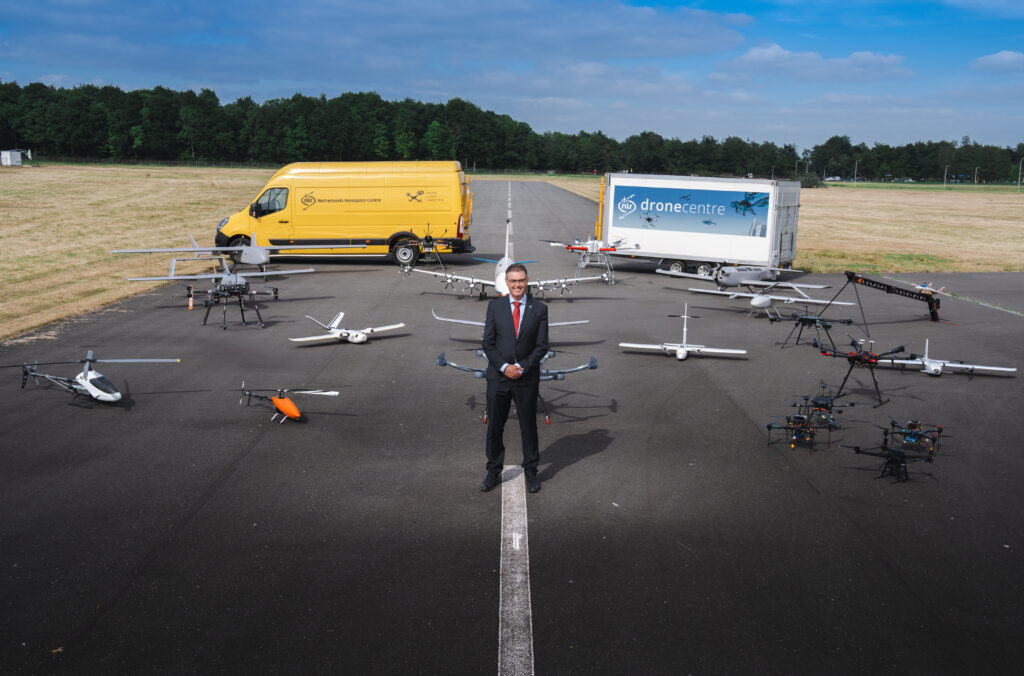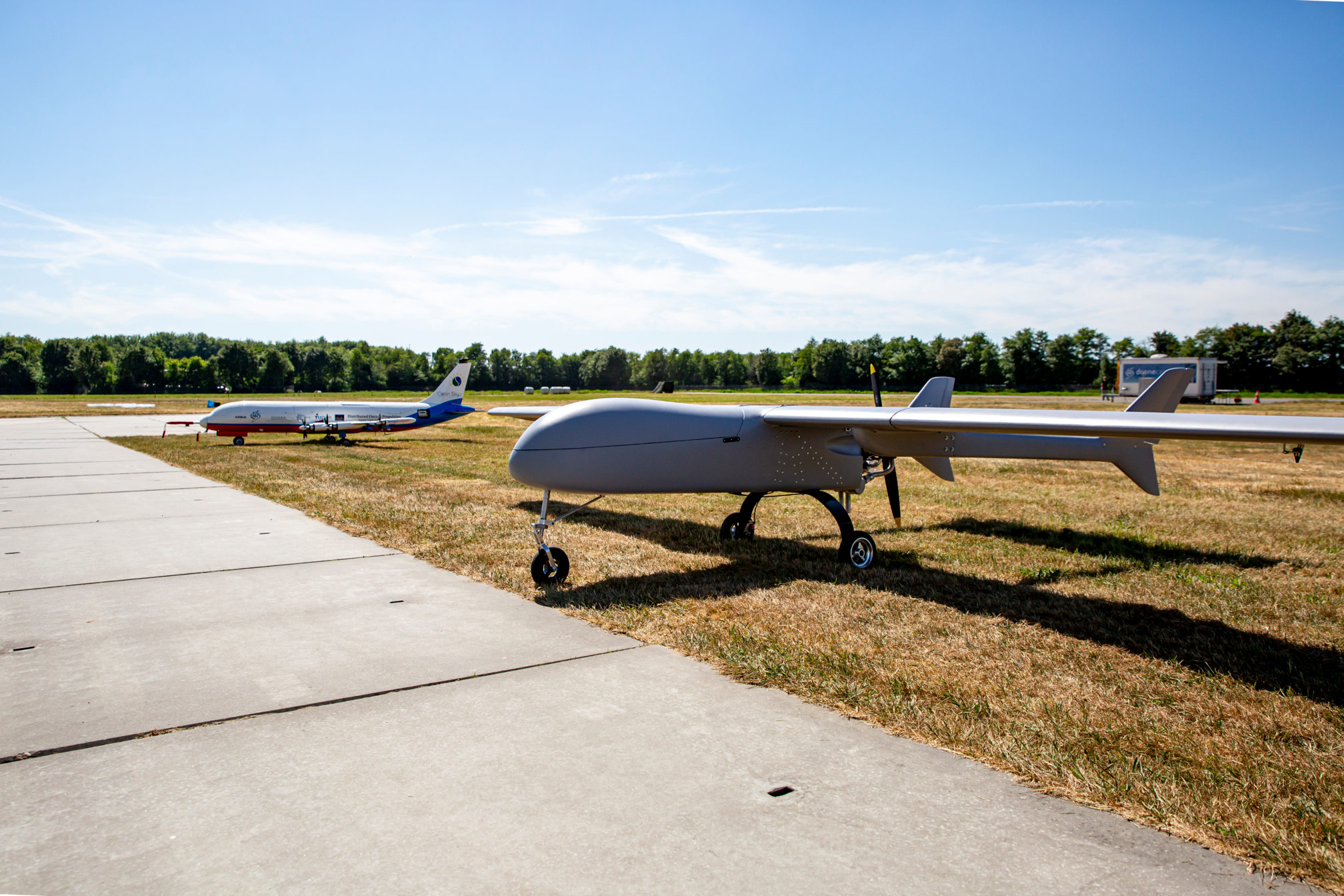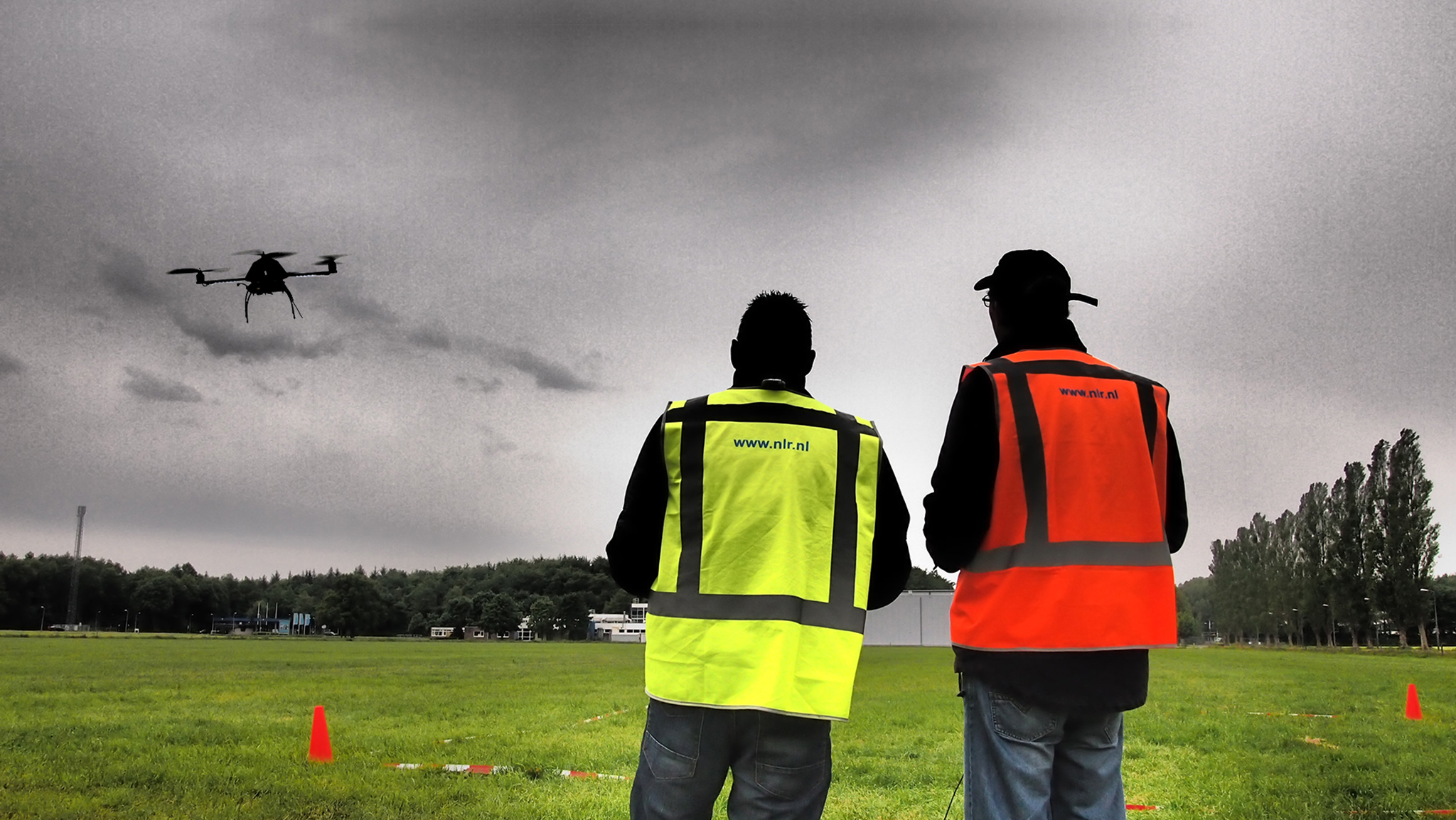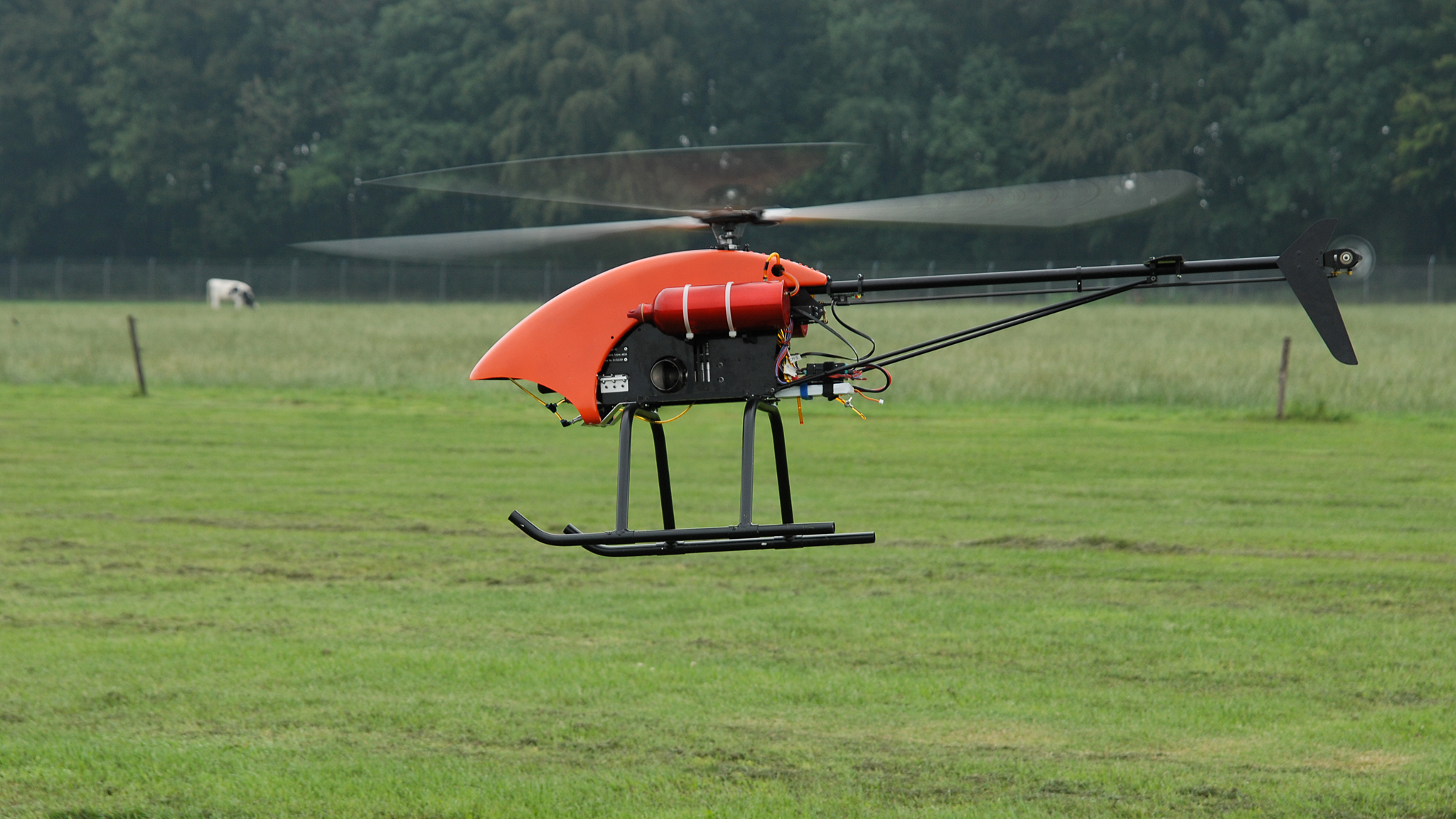Unmanned systems are playing an increasingly significant role in conflicts and warfare as is clearly evident in Ukraine. “It often involves small, relatively simple drones that swarm through the airspace in their tens or hundreds,” says Bert Thuis. This is just one of many examples of the deployment of uncrewed systems in the air. As a knowledge institution, NLR works closely with the Ministry of Defence. “We carry out research on new technologies for the deployment of new systems. Developments within the current forms of warfare are progressing faster and faster,” he continues. “For example, in Ukraine, you see that the opponent has found a way to disable the drones within a couple of weeks, for instance by jamming the systems (disrupting the signals). We need to able to respond quickly and provide support where necessary.”
Fast and reliable research
To accelerate innovation around unmanned systems, NLR opened the Quick Response Drone Facility (QRDF) on 21 May 2025. This facility brings together various people and resources within NLR. The goal: to make a drone operationally deployable within four to six weeks, based on a request from the Ministry of Defence.”That’s easier said than done,” says Thuis. “A six-week timeline is very short for NLR. We often work on research projects with a duration of more than ten years, which is common in the aerospace sector because of the stringent safety standards.” Thuis emphasizes that these kinds of standards remain important even in short-term research projects, but a different approach is required. “From a technological perspective, it’s not really a challenge to work with a six-week deadline, as the technology is usually far enough advanced. We mainly need to adapt our way of thinking and operating. For example, consider procurement procedures, which often take several months. That obviously doesn’t work when a product needs to be delivered within six weeks.”
The approach to projects with shorter lead times also requires a shift within the organisation. “It’s essential that we become comfortable with failure,” he says. “We’re used to thoroughly examining everything in theory before testing it. But that’s not always possible with projects in the QRDF.” That’s why NLR uses the ‘fail fast’ principle in this facility. As a result, researchers proceed more quickly to testing, allowing them to gain insights into what works and what doesn’t in a relatively short timeframe. “If something doesn’t work, we move on to an alternative until we find a good solution,” Thuis outlines. This is also known as short-cycle innovation.
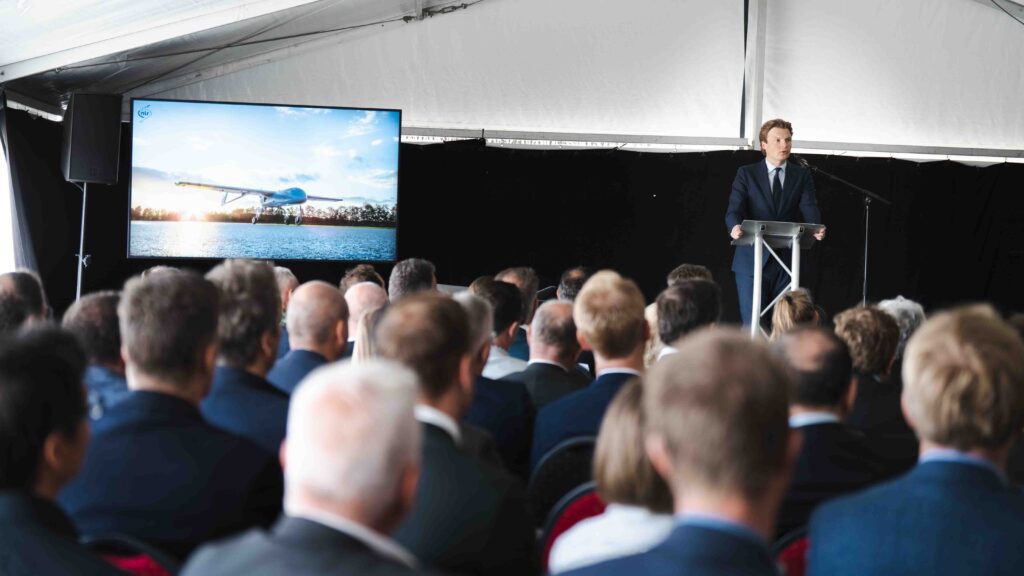
Collaborating with SMEs and start-ups
NLR is collaborating with small and medium-sized enterprises (SMEs) and start-ups to shape the workflow within the QRDF. Initially, these projects were mainly carried out internally, but Thuis wants to involve start-ups and small and medium-sized enterprises (SMEs) even more intensively in the process. “These companies play a vital role in the development process, as they are well-suited to rapid adaptation and innovation. Ultimately, they will also be responsible for manufacturing the drones”. By combining NLR’s expertise in knowledge and technology with the agility and entrepreneurial spirit of SMEs and start-ups, Thuis aims to create a powerful partnership.
Centre of Excellence
The QRDF marks the beginning of NLR’s journey towards establishing a Centre of Excellence for Uncrewed Aerial Systems (UAS). This centre is to be situated near NLR’s office and research facilities in Marknesse, and will be a physical hub where the Ministry of Defence, research institutions, industry partners, and educational organisations can converge to drive innovation and advancement in the field. Thuis describes the centre as a “campus-like” setting, within walking distance of NLR’s facilities, where companies can rent offices and workshops, and gain easy access to NLR’s research facilities in Marknesse to further develop and test their products. “We will provide support from NLR wherever possible, and companies will have easy access to our facilities,” he explains.
NLR has a range of advanced facilities at their premises in the Noordoostpolder in the Netherlands that play a crucial role in the development of drones. For example, NLR has a restricted airspace that allows for the testing of non-certified experimental drones. At the same location, NLR also has the ACM3 technology centre, which focuses on the development of automated manufacturing techniques for composites and metals. This technology centre includes a “Pilot Plant”, a test factory where automated composite manufacturing technologies are developed for high Technology Readiness Levels (TRLs), with the aim of helping start-ups and small and medium-sized enterprises (SMEs) bridge the “valley of death” (the period between the proof-of-concept (demonstrating that an idea works) and the commercial launch of a product or service). NLR also has a moving platform that simulates landing a drone on the deck of a ship. The organisation also collaborates with the Mobility and Infrastructure Test Centre (MITC), where a miniature version of a physical city is being developed to practice drone flights in an urban environment. This “city” is scheduled to be completed in 2026, providing a unique testing ground for drone manufacturers and operators.
“These facilities are incredibly important for the development of drones, but for relatively small companies, it’s often too expensive and complicated to arrange themselves,” Thuis explains. “By allowing them to use our facilities, these companies can innovate more quickly.” Once a company has completed its development and is ready for production, it can “fly out” of the facility, making way for new companies to take its place.
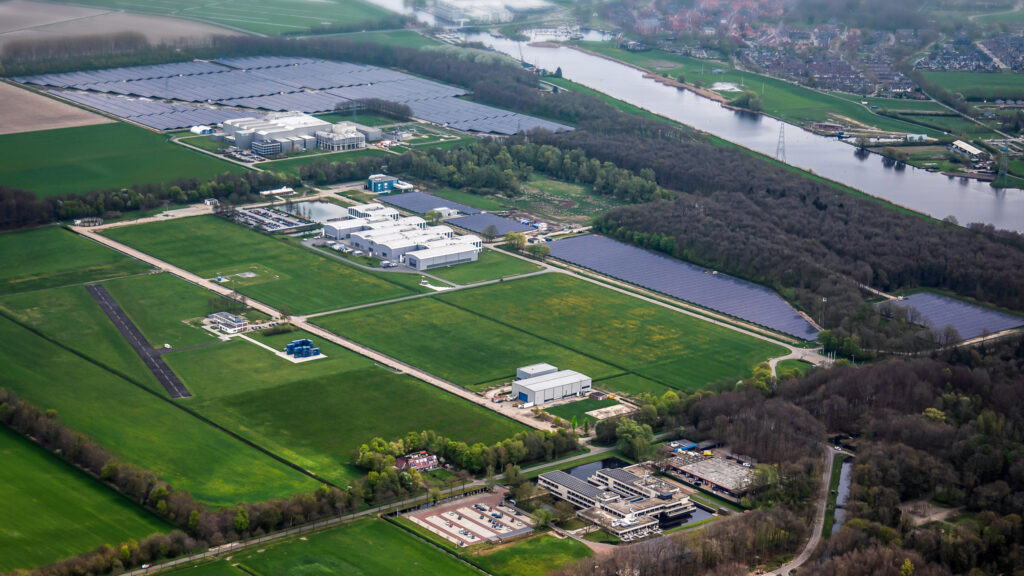
Everything under one roof
The QRDF and the Centre of Excellence are interconnected. The QRDF is where new drones are researched and developed, while the Centre of Excellence is where companies can then explore the possibility of rapidly scaling up production.
The Centre of Excellence takes it a step further. Thuis emphasizes that the campus is not just about the relatively simple drones from the QRDF, but also provides space for the development of highly complex systems with longer development times. “We can make a contribution at all levels,” he says.
Education is a crucial aspect
Education is an integral part of the centre’s mission, with NLR teaming up with Firda to launch a vocational training programme (MBO) that focuses on the design, production, and operation of unmanned systems. As Thuis explains, “By combining Firda’s educational expertise with NLR’s industry knowledge, we can provide students with the skills and training they need to succeed in this field, while also addressing the future personnel needs of companies and organisations like the Ministry of Defence. NLR will also provide support for practical training sessions during the course.”
Defence Strategy
The development of the QRDF and the Centre of Excellence is closely aligned with the Ministry of Defence’s Strategy, “Defence wants to make it easier for startups and scale-ups to access R&D facilities in the Netherlands, and that’s exactly what’s happening here,” Thuis explains. “Additionally, the strategy emphasizes the importance of scalability of innovations, meaning that they should be relatively easy and quick to produce.” To achieve this, Thuis notes that NLR works with commercially available equipment that is relatively easy to obtain.
Ultimately, Thuis hopes that the Centre of Excellence will play a key role in the development and production of complex unmanned systems in the Netherlands and Europe in the future. “This will increase the reliability and security of supply for the Ministry of Defence, making us less dependent on other countries that can suddenly change direction,” he says. “Ultimately, we’re working towards a European supply chain for technologies, materials, and products needed to preserve our freedom.”
